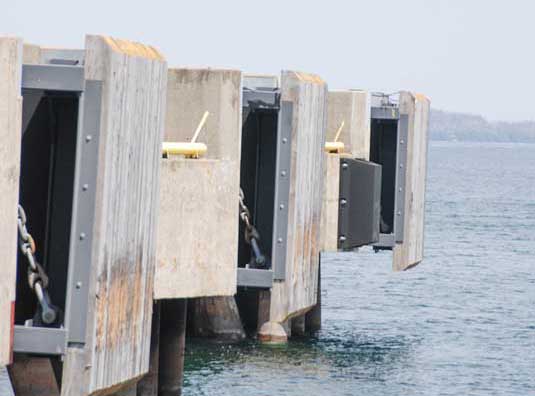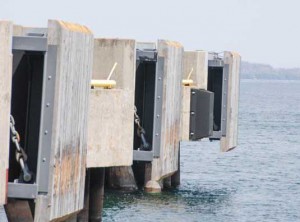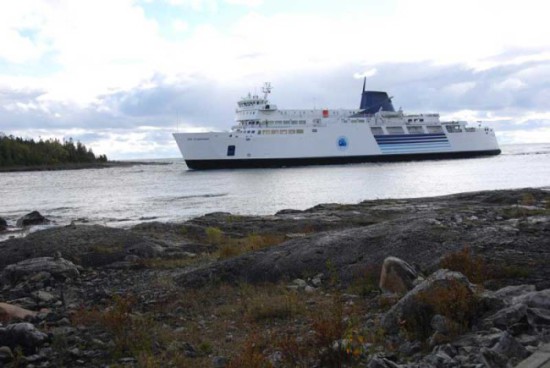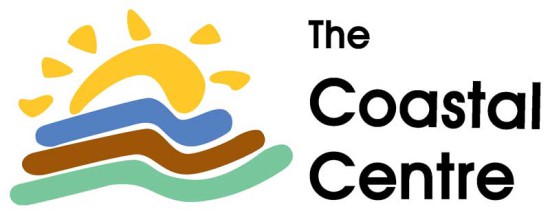I have now skimmed through the 2012/2013 Chi-Cheemaun marketing report by the consultants. I need to read it in more depth, so please consider these comments preliminary in nature, a start of a conversation, but subject to revision and clarification.
The consultant’s report on the Chi-Cheemaun makes some good points, but I feel they missed some major issues. I agree the competitiveness of the ferry has been dropping for two decades. It’s unfortunate that Owen Sound Transportation Company (OSTC) didn’t detect this steady decline earlier, and decide to do something about it two decades ago. That seems like mismanagement by OSTC, but this historic disappointment is water under the bridge now.
I agree that the Chi-Cheemaun competes on three issues: time, money and tourism experience.
A RO-RO (roll on, roll off) ferry was a big experiential thing when it first launched, but is less so now, but grandkids of original passengers will come back if it was well done all those years. Unfortunately I suspect many kids and grandkids have relocated outside of the original Chi-Cheemaun marketing sweetspot (where both time and money favour use of ferry) of 20 years ago, and the sweetspot has shrunk as well, limiting the inter-generational repeat business beyond a one-time affair. I therefore conclude that this factor can slowly dissipate and become less and less in the Chi-Cheemaun’s favour. If it offers experiential benefits, as well as being cheaper/better, the Chi-Cheemaun wins for sure. Unfortunately that is less and less true.
I believe that the Chi-Cheemaun crew need to learn to act like an Indy 500 pit crew (ie. four new tires, fill the gas tank, clean the windshield, a drink of water for driver; all done in nine seconds or less). Forcing people to sit on the dock for more than one hour kills the Chi-Cheemaun. With practice by the crew, and even with inexperienced and nervous drivers going up ramps, there is no reason the entire ferry can’t be unloaded and reloaded in 20 minutes or less, perhaps as fast as 10 minutes. With a 1.7 hour crossing, a total trip could be two hours from arrival at dock to offloading at other side. Re-crank those numbers on this basis, and I think the Chi-Cheemaun wins the time battle vs. the drive around option. If not, I fear the Chi-Cheemaun loses more and more until it is dead.
There is special anti-friction bottom paint that can significantly reduce drag on ocean going vessels, paying handsome returns in reduced fuel consumption. Can this pay for the Chi-Cheemaun? Significant results have been achieved in last 10 years with re-design of propellers and rudders, making them much more efficient, saving fuel. Could this retrofit work for the Chi-Cheemaun? Neither of these were mentioned in the report from what I saw. Why not?
The report seems to focus only on marketing. Why did OSTC limit it to this?
Marketing is only effective for exposing people to new services, or prompting continued usage, or more frequent usage. If the service has disadvantages for the customer, marketing will only work by fooling the customer to try it once, and they won’t repeat their mistake no matter what marketing budget is used. Focus needs to be made on getting an excellent reason for the Chi-Cheemaun to exist, then and only then marketing of that excellent reason. The Chi-Cheemaun is slowly dying because it is losing its advantage and relevance more each year. That is where everybody needs to focus their efforts if we are to save the Chi-Cheemaun. If we can’t get a sufficient majority willing and able to focus their efforts here, then call it a hopeless cause, and end it quickly. Don’t let the Chi-Cheemaun end in a slow, dragged out, pitiful whimper.
Many people feel the Chi-Cheemaun is over-staffed. The Chi-Cheemaun needs sufficient staff for normal operations, as well as emergencies, up to and including the potential sinking of the ship and abandoning ship in night time conditions and cold Fall weather/water in the middle of a storm. Break-even cost of ferry ticket is highly dependent on staff salaries, diesel fuel used, and OSTC overhead.
Why not price tickets at the break-even cost, assuming all ferry trips run full. That way, the passengers who do sail are not penalized for OSTC’s failure to market, or to resolve non-competitive issues they should have solved decades ago. This is the same pricing strategy that the Japanese used to gain the majority of the market share for VCRs in the 1970s. It worked for them, it could work now for the Chi-Cheemaun. It would be foolish to do this if OSTC is not committed to resolving on a timely basis all the non-competitive issues that plague them.
Can the OSTC trim payroll so as to win the price issue vs. drive around? We either lose some jobs today, or we lose all the jobs eventually because the ferry is shut down as being no longer relevant or cost competitive to the available alternatives.
The Chi-Cheemaun is too big in the spring and fall, and too small in the summer. This means the Chi-Cheemaun cannot extend its season to gain additional revenue, as it is too big and too expensive. We either need to market like crazy to build the shoulder season’s demand for service, or get a smaller boat that can run longer into the normal shipping season.
There are large hovercraft that can travel at twice the speed and use 1/3 of the fuel as compared to a hulled ship like the Chi-Cheemaun, based on my conversations six years ago with a US hovercraft manufacturer building them for US Marines, big enough to carry cars, buses, transport trucks, and walk-on passengers. US Marines are now designing and building the next generation of hovercraft.
If a hovercraft is used with a 5-person crew, it could run year-round over lake ice, pressure ridges 10 ft. tall on the iced-over lake, slush, open water, etc. and up to 30 ft. waves. No dock is required, just a boat ramp onto the shore; with self-load and unload. It would run year round, perhaps eight hours per day in the dead of winter. As it got busier in the year (ie. early spring), it could go 24 hours per day with two or three sets of crew. When even this was not enough, that is when the Chi-Cheemaun is brought in to help out for the busy summer season. The fall is tapered off in the same way. The year-round revenue source offsets the constant overhead costs of the OSTC office staff. Due to right-sizing on a year-round basis, nobody gets left on the dock. There would be software for smart phones that would allows you to automatically book a spot so you know ahead of time you will get on board provided you arrive just 10 to 20 minutes before sail; no more worry about being left on the dock. If not, there is another ferry in 1.5 hours. Last year, if I missed the Chi-Cheemaun ferry, being left on the dock in South Baymouth, it is better to immediately leave South Baymouth to drive around rather than wait for the next ferry; I know because I’ve been left on the dock many times, and did just that. That is killing the Chi-Cheemaun. The ferry schedule needs to be done so that if you miss this ferry, it is always better to wait for the next ferry, rather than being forced to abandon their ferry plans for driving around.
The report mentions the benefits of reversing home port for the Chi-Cheemaun, but the impossibility of this idea for the crew due to crew’s current residence locations. I suggest that the fresh crew can load at the second last ferry docking, ride to the far side while off-duty, spend the night on board for free in South Baymouth, and start work the next day as the ferry loads and sails for Tobermory. The stale crew can be off-duty once they dock on last arrival at South Baymouth, spend the night on board for free, and be dropped off at their home port the next day. I understand the drawbacks on this for the crew, but it can make a significant improvement for customers on both sides of the trip. I suggest that the customer’s needs should trump the crew’s convenience. If not, perhaps the crew have a better way of accomplishing the same result. If not, then the crew may well find it more convenient to be unemployed.
There are now surface effect ship/plane that can fly above the water at up to 200 km/hr. These are proposed for Staten Island ferry and Juno Alaska, but I think these are pipe dreams today, as the technology is very new and expensive. However, I haven’t fully researched them, and perhaps it’s a viable option, in spite of my reservations.
If some or all of these suggestions are not dealt with, I fear it is only a matter of time before the Chi-Cheemaun is killed.
Glenn Black Providence Bay






